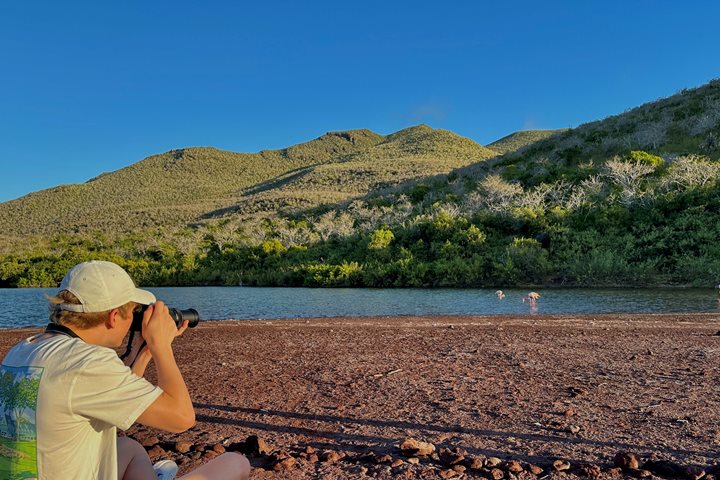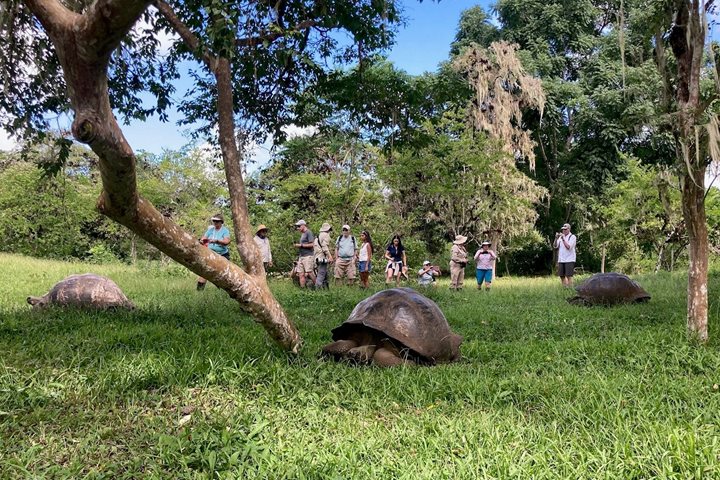We enjoyed a Zodiac ride through Black Turtle Cove, a diverse and important mangrove ecosystem on the north side of Santa Cruz Island. National Geographic Islander II navigated along the island’s eastern coast, heading south to Academy Bay. The bay was named after the 1905-1906 California Academy of Science expedition.
At Academy Bay, guests of National Geographic Islander II disembarked at Puerto Ayora. With over 12,000 inhabitants and its centric location, this is the main economic/touristic center of the Galápagos Islands.
After landing at “Gus Angermeyer” pier, we headed to the buses to begin our activities. We took a 35-minute ride along the leeward side of Santa Cruz and observed changes in vegetation as we traveled.
Santa Cruz highlands hold a unique composition of plants, and we identified two of the distinctive vegetation zones. The Scalesia Zone is an endemic forest dominated by an aster-related pioneer tree. We admired the inverted layer of clouds that is responsible for the lush vegetation encountered in this zone.
Near the Scalesia Zone, we observed two popular geological formations known as Los Gemelos, or “The Twins” in English. The formations are different from a caldera since they are not located over a cone or volcano. The two cavities are the result of the collapsed rooftop of magma chambers. The magmatic roof collapsed in an attempt to fill the void with cooled off lava.
After we finished exploring the Scalesia Zone, we made our way to Manzanillo Ranch. We enjoyed a delicious meal as well as the chance to see wild tortoises. When we arrived at the farm, we geared up with rubber boots, proper footwear to avoid muddy sections and invasive fire ants. Once we were ready, we explored the private land that is home to the western population of Santa Cruz tortoises.
Approximately 11% of Santa Cruz land is used for agriculture. Tortoises have built migratory routes to important sources of food and water along these private pastures. Tourism is the main source of income in the Galapagos, and some farm owners in Santa Cruz have switched from agriculture to tourism.
We concluded our day with a visit to the Galapagos National Park’s breeding center, where we learned about the dangers tortoises have faced over the last decades and the important efforts to restore tortoise populations and ecosystems.







